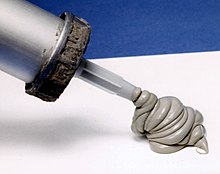Silicone is a versatile polymer composed of repeating siloxane units that creates materials ranging from oils to rubber-like substances.
Chemical Structure and Properties
Silicon Backbone Creates Stability
The foundation of silicone consists of an inorganic silicon-oxygen backbone chain with organic groups attached to silicon atoms. This unique structure gives silicone remarkable thermal stability from -100°C to 250°C. The material can take many forms – from flowing liquids to solid rubber – depending on how the molecules link together.
Performance Features Drive Applications
Silicone’s exceptional properties include water repellency, chemical resistance, and electrical insulation. It won’t support microbial growth and resists damage from UV light, oxygen, and ozone. The material’s gas permeability makes it valuable for medical uses where increased aeration matters.
Industrial Applications
Automotive Engineering Demands Durability
In vehicles, silicone serves as a high-temperature lubricant for brake components and insulation for spark plug wires. The material creates reliable gaskets for engines and transmissions but must be kept away from paint shops where contamination causes surface defects.
Aerospace Requirements Test Limits
Aircraft manufacturers use specialized aerospace grades of silicone that perform from -70°C to 220°C. The material seals cabin windows, protects electrical systems, and dampens vibration in everything from overhead bins to entertainment systems.
Consumer Products
Kitchen Tools Showcase Versatility
Food-grade silicone has revolutionized kitchen tools with heat-resistant properties up to 260°C. Common items include non-stick bakeware, steamer baskets, and flexible ice cube trays that allow easy removal.
Medical Applications Save Lives
The biocompatible nature of medical-grade silicone makes it essential for implants, contact lenses, and bandages[2]. Polydimethylsiloxane (PDMS) creates soft, durable materials for scar treatment.
Environmental Impact
Safety Concerns Guide Usage
While many silicones biodegrade readily, certain compounds like cyclic siloxanes D4 and D5 can accumulate in the environment[2]. At high temperatures around 200°C, silicones release small amounts of formaldehyde, though less than many plastics.
Citations:
https://en.wikipedia.org/wiki/Silicone
In organosilicon and polymer chemistry, a silicone or polysiloxane is a polymer composed of repeating units of siloxane (−O−R2Si−O−SiR2−, where R = organic group). They are typically colorless oils or rubber-like substances. Silicones are used in sealants, adhesives, lubricants, medicine, cooking utensils, thermal insulation, and electrical insulation. Some common forms include silicone oil, grease, rubber, resin, and caulk.

English
Etymology
From silicon + -one. Originally obtained by the attempted synthesis of the silicon equivalent of a ketone.
...
